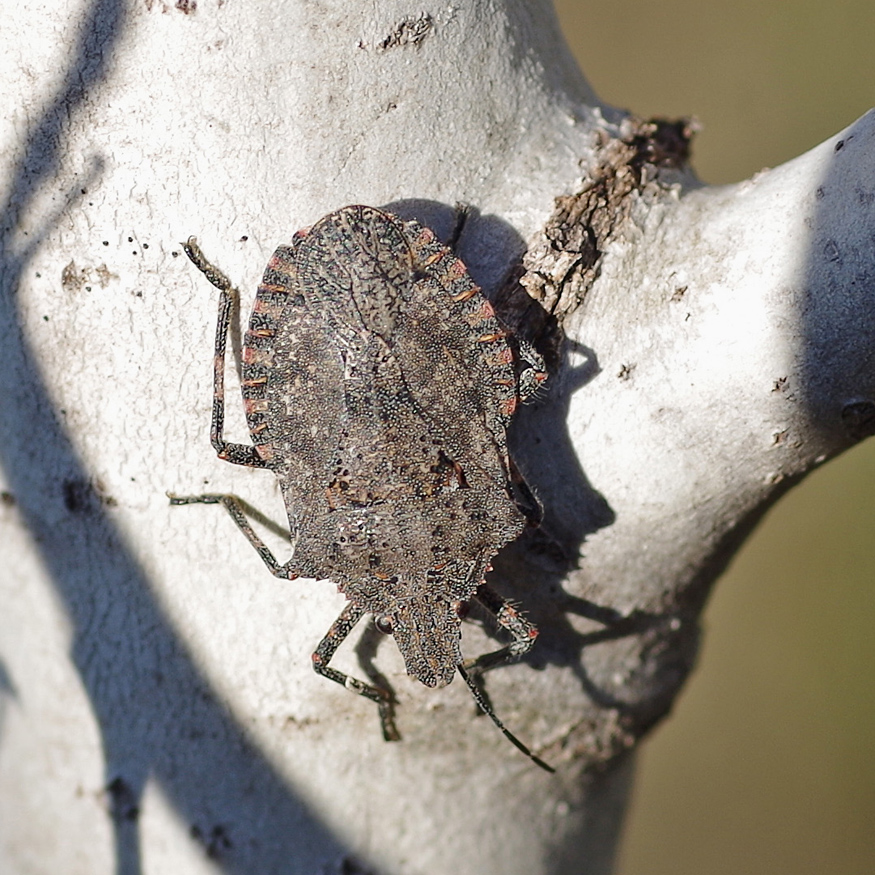
by Kate Redmond
Rough Stink Bug
Greetings, BugFans,
The BugLady has a thing for stink bugs. They’re like bumble bees and water lilies – she can’t walk past one without taking its picture. She especially likes stink bugs in the genus Brochymena, the Rough stink bugs, which look like walking fossils. But before we talk about the Brochymena, which have made a few brief appearances in BOTW, here’s a brief Stink Bug 101:
Stink bugs are in the family Pentatomidae, which means “five sections” and refers to the number of segments in the antennae. In the UK, they’re called shield bugs, a name that is applied here casually to members of the Pentatomidae, and more specifically to members of a different family. About 220 of the globe’s 5,000 stink bug species live in North America.
“Stink bug” because they are chemically defended – when alarmed, they can release a lingering odor that may be unpleasant (or not), noxious, or even toxic (think “cyanide”). As a defense against predators, the odor is imperfect. Most birds have no sense of smell, but a smaller predator that got a face full of chemical spray would be deterred, and some parasitic wasps and flies actually locate stink bugs by their odor. .
And, of course, common names being what they are, the name can and is applied to any unrelated insect that has an odor.
Many stink bugs are plant feeders (some damage agricultural crops), and others are carnivores that help to control unwanted insects. And some, in cuisines around the world, are prized for the spiciness they add to a dish. All feed by poking their piercing-sucking mouthparts into their food of choice and injecting a saliva that predigests tissue so it can be siphoned up.
Most stink bugs come in utilitarian greens, grays, or browns, but some come in pretty flashy colors https://bugguide.net/node/view/531728/bgpage, especially as nymphs https://bugguide.net/node/view/344542/bgpage.
A few species of stink bugs exhibit maternal care – https://bugguide.net/node/view/1329274/bgimage.
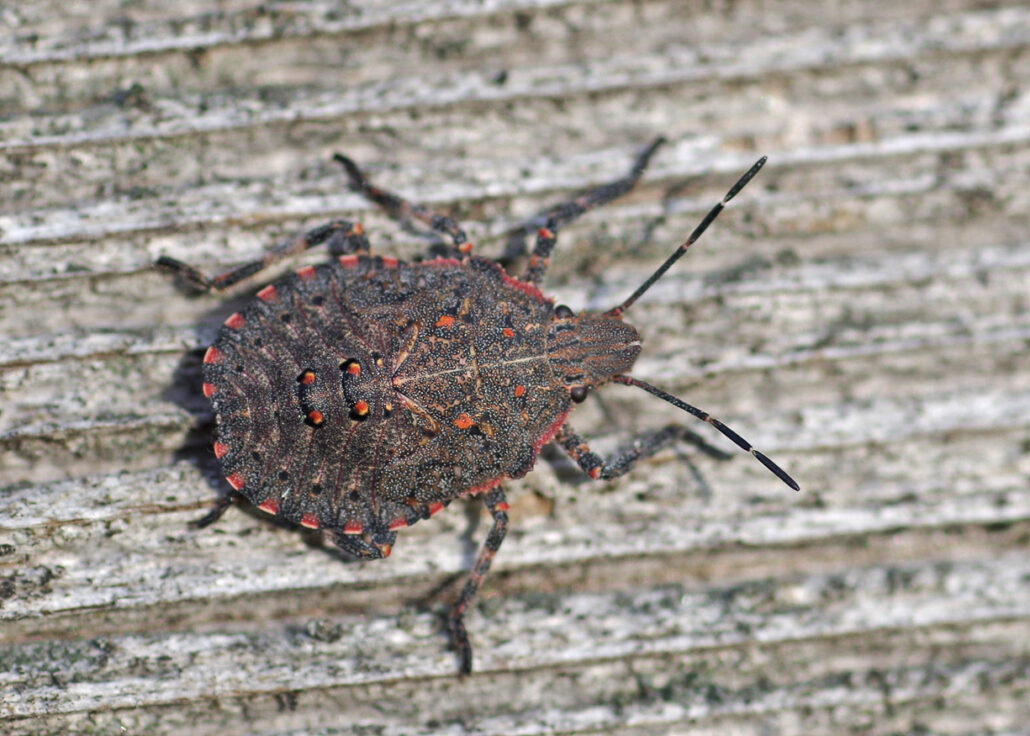
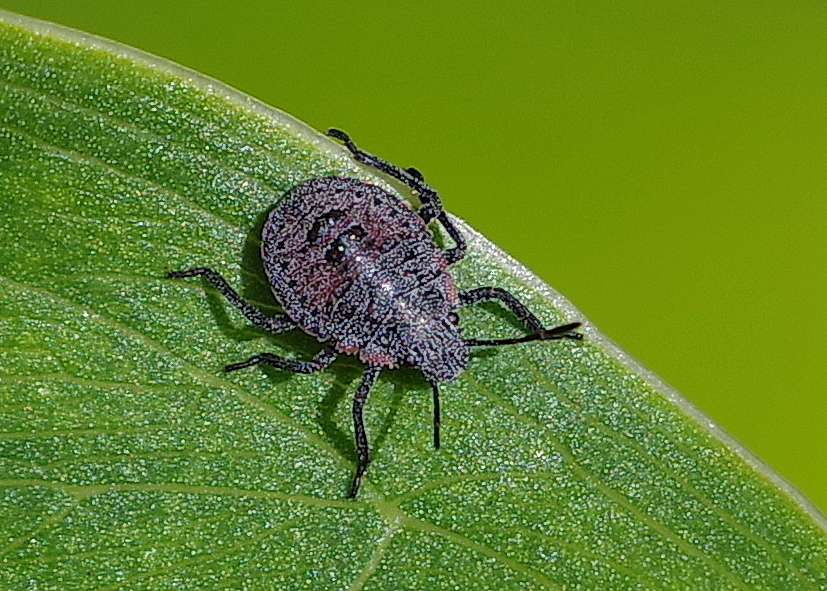
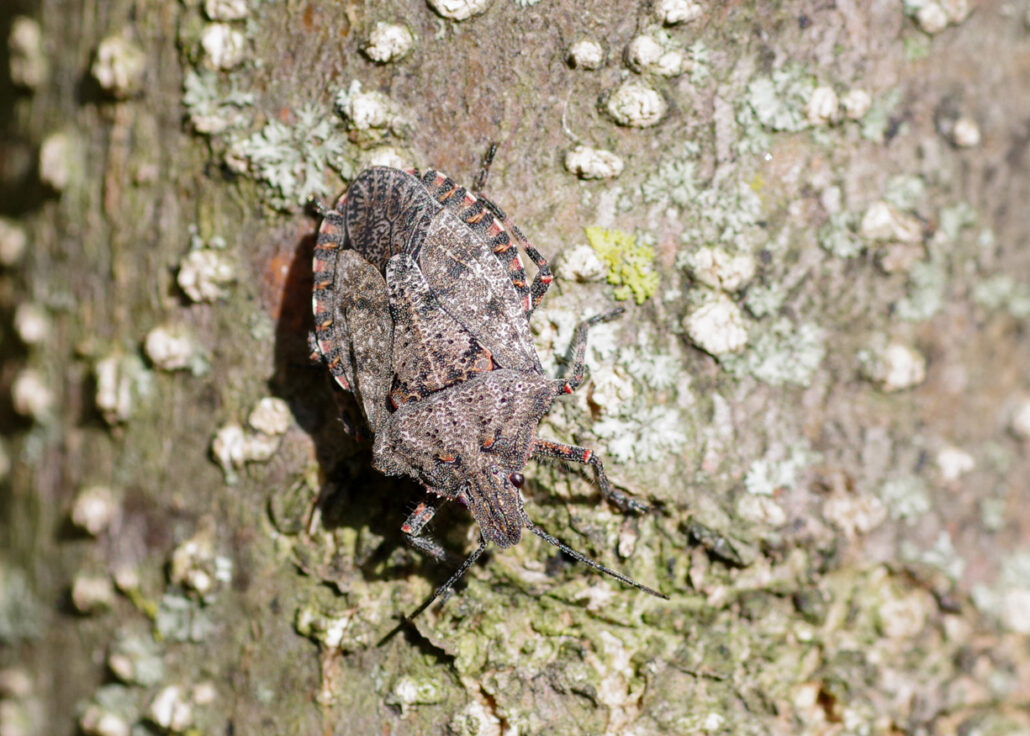
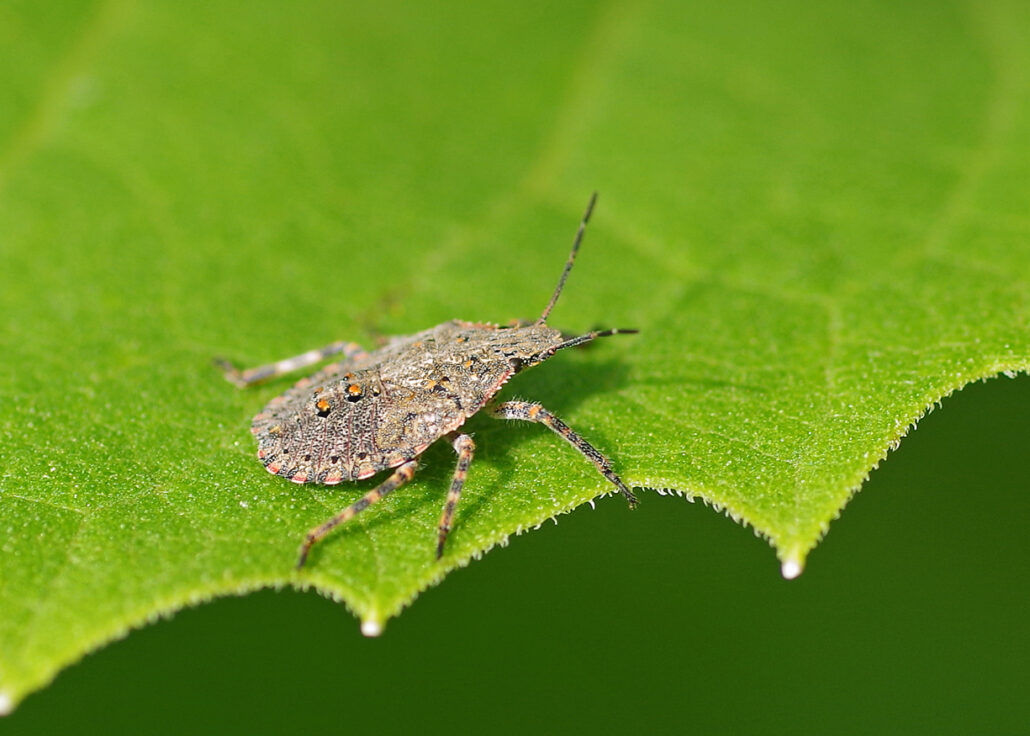

ROUGH/TREE/ARBOREAL STINK BUGS – Brochymena – are one genus (with 17 species) of one tribe (Halvini) of one subfamily (Pentatominae) of the stink bug family. Based on images they’ve received from their community, bugguide.net shows the Brochymena occurring from sea to shining sea, except North Dakota and Manitoba, and their range extends south into Panama. They’re typically found on trees and shrubs.
They’re typically found on trees and shrubs, but their cryptic colors and textures can make them difficult to find because they look like a bit of bark or lichen on six legs. At about 5/8”, they’re large for stink bugs.
For the Brochymena, everything was going swimmingly until 1998, when a new stink bug came to town. It was the Brown marmorated stink bug https://bugguide.net/node/view/2232265/bgimage, which is a huge pest in orchards and agricultural fields and, in the winter, in homes. The two look similar – the BMSB has wide pale bands on its antennae and one white band on its hind legs; while the Brochymena have two white bands on their hind legs, a protruding, square/pointy face with antennae noticeably in front of their eyes, and toothed “shoulder pads” that look like a bit of cog wheel. If you see a lot of them, they’re BMSBs.
There’s some discussion about their diet. Bugguide.net says that they are “Phytophagous [plant-eating] (some reports of predation).” They’re known to feed on the sap and leaves and seeds of many species of trees and shrubs including ash, willow, and box elder, with brief, opportunistic forays into carnivory. Unlike many other species of stink bug, they’re not considered harmful, and because they’re not considered pests, they haven’t been exhaustively studied. Other sources say that their forays into carnivory are more than occasional, and that they eat caterpillars, leaf beetle larvae, aphids, and other soft-bodied insects that they come across.
A Rough stink bug’s “stink” – said by one source to smell like maraschino cherries, and by another, like almonds – may not deter ants, tachinid flies, sand wasps, and a variety of birds (especially vireos, says one source). Eric Eaton, in his Bug Eric blog, writes that “Given their cryptic nature, it amazes me that any other creature could find them and make a meal out of them.” He continues, “Feather-legged flies in the genus Trichopoda glue their eggs to the top of the stink bug’s body, where the insect cannot reach to groom them off. The fly larva that hatches bores through the exoskeleton of the host and feeds as an internal parasite, usually killing the bug eventually.”
Adult Brochymena overwinter, sheltered in leaf litter, mulch, bark crevices or logs (some pick stacks of firewood, and are then brought inside in winter), and they’re sometimes seen out and about on warm winter days. They emerge to mate in late spring, and females lay eggs in clusters of 10 to 20 on twigs. Adults die by the end of June, and nymphs are found throughout summer. There’s only one brood a year.
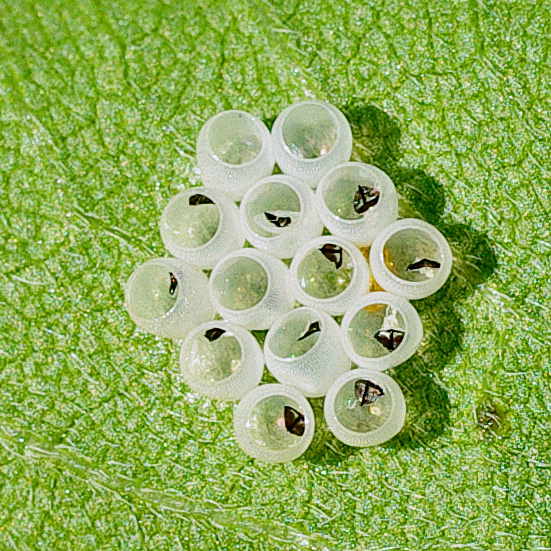
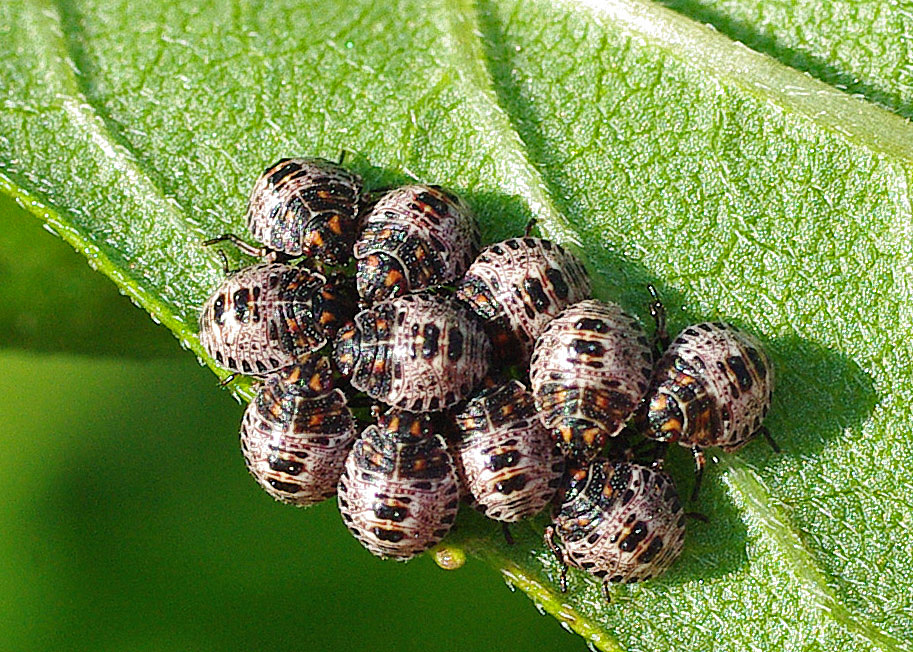
Isn’t this “probably unnamed” Arizona species a beauty https://bugguide.net/node/view/2355448/bgpage!
Kate Redmond, The BugLady
Bug of the Week archives:
http://uwm.edu/field-station/category/bug-of-the-week/
